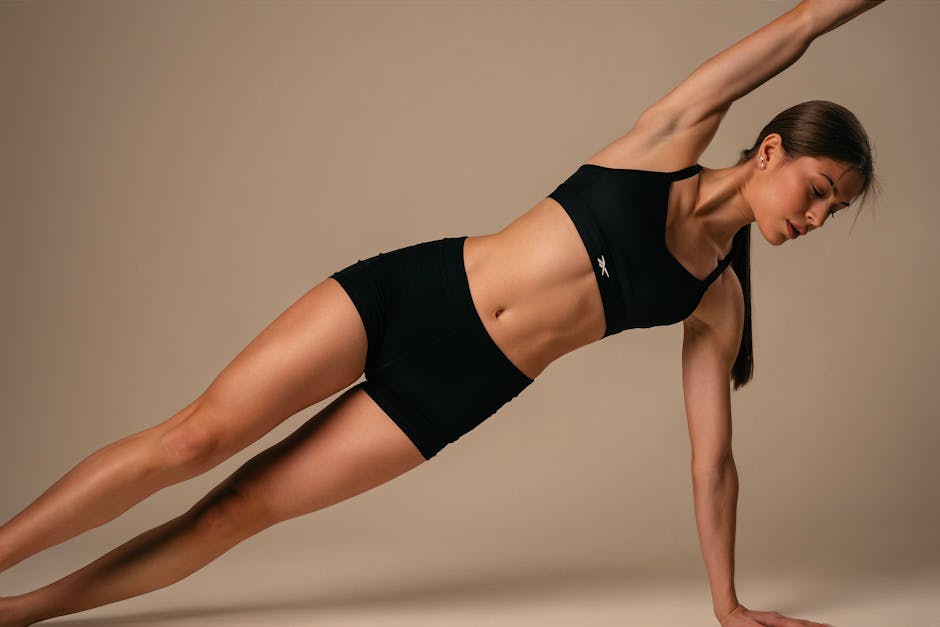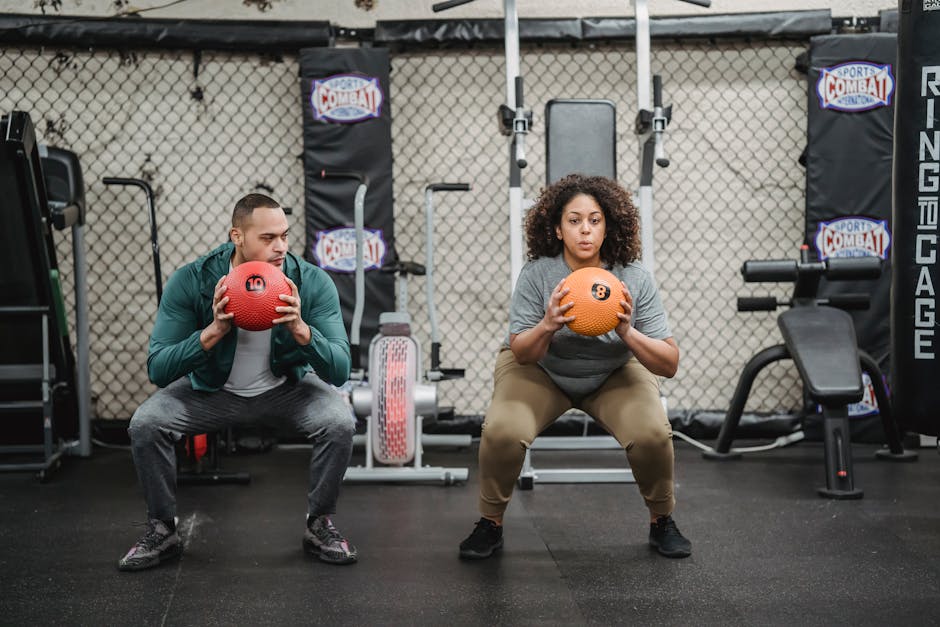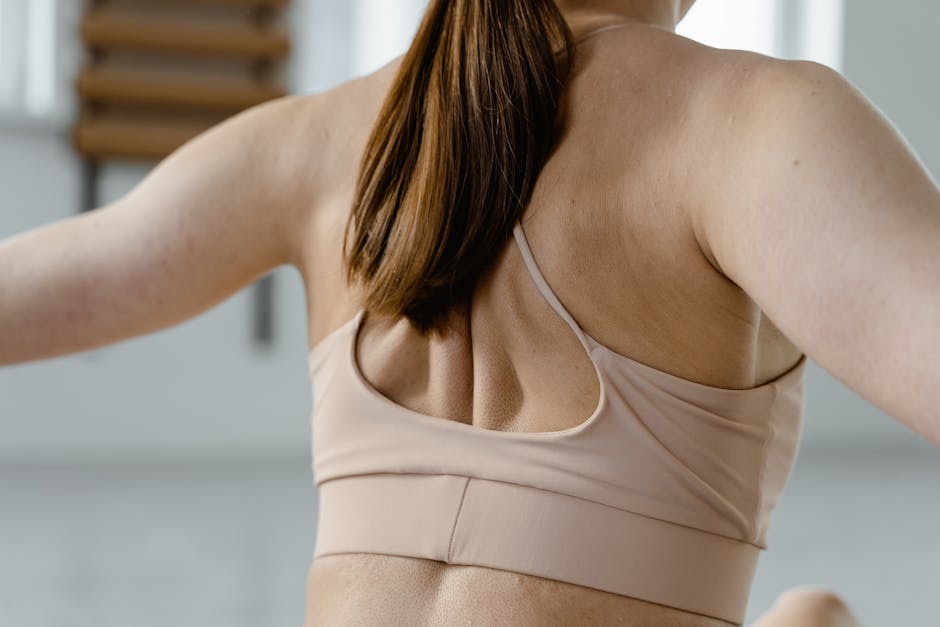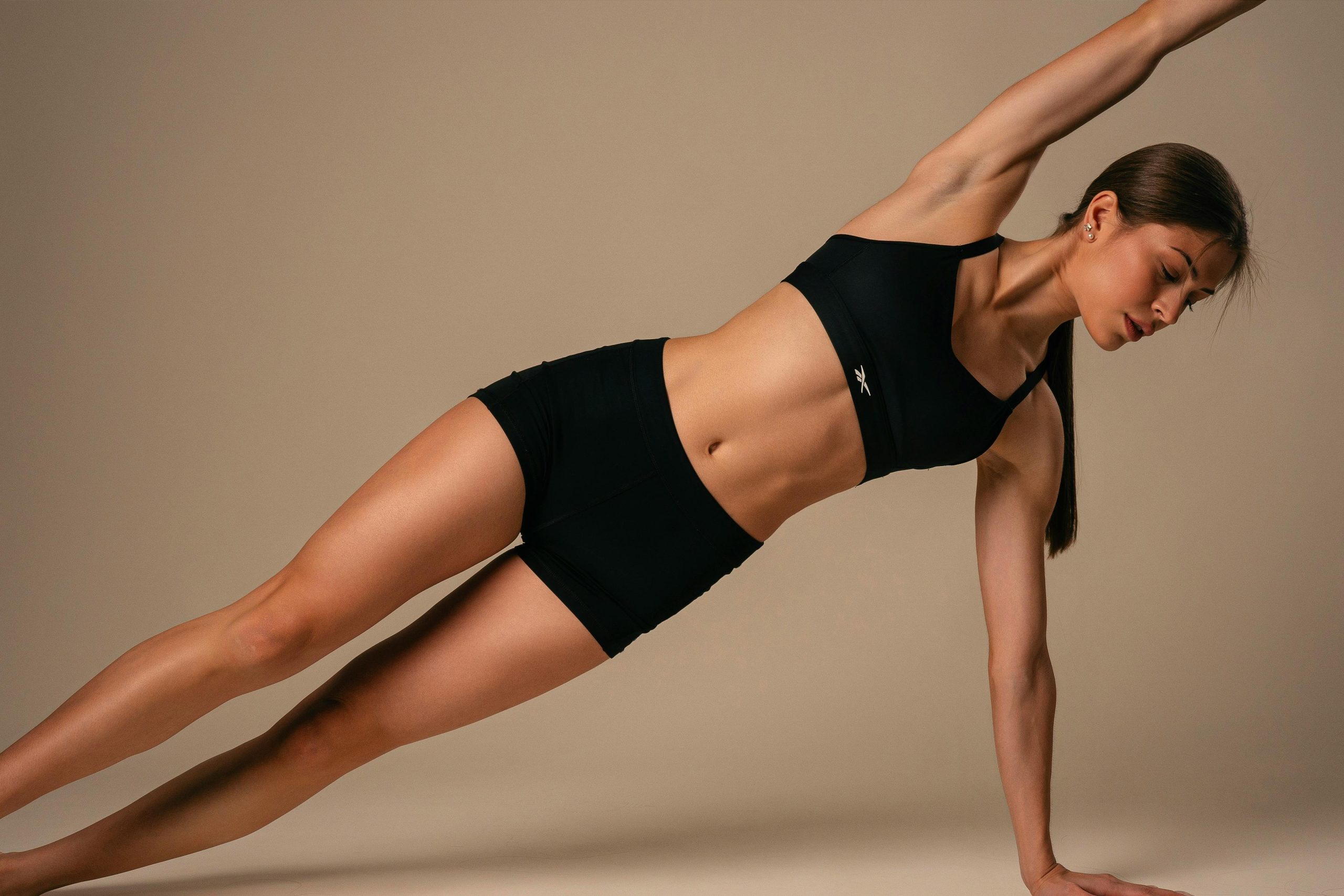Tired of that stubborn belly fat clinging on no matter how hard you train? You’re not alone! Many find targeting this specific area incredibly frustrating, but the good news is that it’s achievable with the right approach.
This article will equip you with the knowledge and effective HIIT (High-Intensity Interval Training) strategies to finally conquer that belly bulge and reveal a leaner, more confident you. Beyond aesthetics, reducing visceral fat (the dangerous fat surrounding your organs) is crucial for improving your overall health, lowering your risk of heart disease, type 2 diabetes, and certain cancers.
HIIT, with its short bursts of intense exercise followed by brief recovery periods, is a highly effective method for fat loss, including belly fat. This is because HIIT boosts your metabolism significantly, leading to increased calorie burn even after your workout is finished – a phenomenon known as Excess Post-exercise Oxygen Consumption (EPOC) or the afterburn effect. You’ll also improve your cardiovascular fitness, build lean muscle mass (which further enhances metabolism), and increase your overall energy levels.
Remember, spot reduction (losing fat from one specific area) is a myth; HIIT works by improving your body composition overall, thus reducing fat throughout the body, including the abdomen.
We’ll dive into the science behind why HIIT works so well for belly fat reduction, providing you with a range of effective HIIT workouts tailored to different fitness levels. We’ll cover crucial aspects like proper exercise form, workout structure (including rest intervals and rep ranges), and the importance of combining HIIT with a balanced diet for optimal results. Get ready to unlock your fitness potential and achieve that flatter stomach you’ve been dreaming of – let’s get started!
HIIT Belly Fat: Master the Moves

Targeting belly fat specifically is a common goal, and while spot reduction is a myth, HIIT training is highly effective at burning overall body fat, including that stubborn abdominal fat. HIIT, or High-Intensity Interval Training, works by pushing your body to its limits in short bursts, followed by brief recovery periods. This metabolic surge continues even after your workout, a phenomenon known as Excess Post-exercise Oxygen Consumption (EPOC) or the “afterburn effect,” contributing to significant calorie expenditure.
To maximize HIIT’s fat-burning potential, focus on compound exercises that engage multiple muscle groups simultaneously. These exercises are more efficient at boosting your metabolism and burning more calories in a shorter time compared to isolation exercises. Think of your body as a furnace; compound exercises are like throwing in large logs, creating a bigger, longer-lasting fire.
Let’s look at some effective HIIT exercises: Burpees (full-body, fantastic calorie burner), Mountain Climbers (core and cardio), Jump Squats (legs and glutes), High Knees (cardio and core engagement), and Plank Jacks (core and shoulders). Remember proper form is crucial. For burpees, maintain a straight back during the squat and a controlled jump.
With jump squats, land softly to minimize joint impact. For mountain climbers, keep your core engaged to prevent back pain. Engage your core throughout the plank jack exercise to maximize its effectiveness.
Here’s a sample HIIT workout: Perform each exercise for 30 seconds, followed by 15 seconds of rest. Complete 3-4 rounds with a 1-minute rest between rounds. Adjust the intensity and rest periods according to your fitness level.
As you get fitter, increase the intensity, duration of the work intervals, or reduce the rest periods. Listen to your body; if you feel excessive pain, stop and rest.
Nutrition plays a vital role in achieving your goals. Focus on a balanced diet rich in lean protein, complex carbohydrates, and healthy fats. Protein helps build and repair muscle tissue, aiding in your metabolic rate.
Complex carbohydrates provide sustained energy, while healthy fats support hormone production and overall health. Remember that HIIT is a tool; combining it with a healthy diet significantly increases your chances of success.
Common challenges include motivation, consistency, and plateauing. To combat these, find a workout buddy for accountability, vary your workouts to prevent boredom, and progressively overload your training (gradually increasing intensity or duration). If you hit a plateau, consider altering your routine, incorporating new exercises, or adjusting your diet.
Don’t be discouraged by setbacks; consistency and patience are key.
In conclusion, while spot reduction is not possible, HIIT is an incredibly effective method to lose overall body fat, including belly fat. By focusing on compound exercises, maintaining proper form, fueling your body with nutritious food, and staying consistent, you’ll be well on your way to achieving your fitness goals. Remember to consult with a healthcare professional or certified fitness trainer before starting any new workout program, especially if you have pre-existing health conditions.
Nutrition’s Role in HIIT Success

HIIT workouts are incredibly effective for burning calories and boosting your metabolism, but they’re only half the equation when it comes to targeting belly fat. Think of your body like a car: HIIT provides the engine power, but nutrition is the fuel. Without the right fuel, even the most powerful engine sputters.
To truly see results, you must support your HIIT training with a well-planned diet. This isn’t about extreme calorie restriction; it’s about making smart, sustainable choices that support your fitness goals. Prioritize whole, unprocessed foods.
Think lean proteins (chicken breast, fish, beans, lentils), complex carbohydrates (brown rice, quinoa, sweet potatoes), and plenty of fruits and vegetables. These foods provide sustained energy, essential nutrients, and fiber, keeping you feeling full and satisfied, reducing cravings that might derail your progress.
Research shows a direct link between high sugar intake and increased abdominal fat. Limit added sugars found in processed foods, sugary drinks, and even seemingly healthy options like flavored yogurts. Replace these with water, unsweetened tea, or infused water for hydration and to curb sugar cravings.
Protein is your ally in this journey. It helps you build and maintain muscle mass, which is crucial because muscle burns more calories than fat, even at rest. Aim for a protein intake of around 1.6 to 2.2 grams per kilogram of body weight daily.
Divide your protein intake across your meals to ensure consistent muscle protein synthesis.
Consider tracking your calorie intake for a couple of weeks to understand your baseline. Many free apps and websites can help. This isn’t about restrictive dieting, but rather about mindful eating—paying attention to portion sizes and making conscious choices.
A slight calorie deficit (around 250-500 calories less than your maintenance level) combined with HIIT will accelerate fat loss, particularly around the abdomen.
Example Meal Plan (adjust portions based on your calorie needs):
- Breakfast: Oatmeal with berries and nuts
- Lunch: Grilled chicken salad with mixed greens and a light vinaigrette
- Dinner: Baked salmon with roasted vegetables and quinoa
- Snacks: Greek yogurt, a handful of almonds, or fruit
A common challenge is feeling overwhelmed. Don’t try to change everything at once. Start by focusing on one or two areas, like increasing your water intake and reducing added sugars.
Gradually incorporate other healthy habits. If you slip up, don’t beat yourself up. Simply get back on track with your next meal or workout.
Remember, consistency is key. Combining a well-structured HIIT program with a balanced nutrition plan will help you achieve your goals. Be patient, stay persistent, and celebrate your successes along the way.
Your body will thank you for it.
5 Essential Techniques for Core Strength

Targeting belly fat effectively requires a multifaceted approach, and HIIT, while excellent for overall calorie burning, needs to be complemented by exercises that specifically strengthen your core. Think of your core as the engine of your body; a strong engine supports all movements and improves overall performance.
Building core strength isn’t just about aesthetics; it’s crucial for posture, stability, and injury prevention. Research consistently shows that strong abdominal muscles are vital for maintaining a healthy back and preventing lower back pain. Let’s delve into five essential techniques to build that core strength and contribute to a leaner midsection.
1. Plank Variations: The plank is a foundational core exercise. Start with a standard forearm plank, ensuring your body forms a straight line from head to heels.
Engage your core, glutes, and quads to prevent sagging in the hips or arching in the back. Hold for 30-60 seconds, gradually increasing the hold time as you get stronger. Progress to side planks (holding for 30-45 seconds per side) and advanced variations like plank jacks or mountain climbers to increase intensity.
2. Russian Twists: Sit on the floor with knees bent and feet slightly elevated. Lean back slightly, maintaining a straight back.
Hold a weight (dumbbell or medicine ball) or resistance band, and twist your torso from side to side, touching the weight to the floor on each side. Aim for 15-20 repetitions per side, focusing on controlled movements to prevent injury. This exercise targets the obliques, contributing to a more defined waistline.
3. Bicycle Crunches: Lie on your back with hands behind your head, elbows wide. Bring one knee towards your chest while simultaneously extending the opposite leg and twisting your torso to touch your elbow to the opposite knee.
Alternate sides, aiming for 20-25 repetitions per side. Control your movements to maximize muscle engagement and prevent neck strain.
4. Dead Bugs: This exercise enhances core stability and coordination. Lie on your back with arms extended towards the ceiling and knees bent at 90 degrees.
Slowly lower one arm towards the floor behind your head while simultaneously extending the opposite leg. Return to the starting position and repeat with the other arm and leg. Perform 15-20 repetitions per side.
Focus on maintaining a stable lower back throughout the exercise.
5. Bird-Dog: Start on your hands and knees, maintaining a neutral spine. Extend one arm forward and the opposite leg backward simultaneously, keeping your core engaged.
Hold for a second or two, then return to the starting position and repeat on the other side. Aim for 15-20 repetitions per side. This exercise improves stability and coordination, strengthening deep core muscles often neglected in other exercises.
Workout Routine Example: Incorporate these exercises into your HIIT routine 2-3 times a week. A sample routine could include: 20 seconds of each exercise, followed by 10 seconds of rest, completing 3 rounds of the circuit. Remember to prioritize proper form over speed.
Common Challenges & Solutions: Many find it difficult to maintain proper form during core exercises, leading to reduced effectiveness or injury. Focus on building a strong mind-muscle connection by performing each repetition slowly and deliberately. If you experience back pain, reduce the range of motion or intensity, and consider consulting a physical therapist.
Listen to your body and don’t push yourself too hard, especially when starting.
Remember, consistency is key. Combine these core-strengthening techniques with your HIIT workouts and a balanced diet for optimal results. Don’t expect overnight transformations – building a strong core, like building a strong foundation for a house, takes time and dedication.
Avoid These HIIT Belly Fat Blunders

Let’s be clear: spot reduction – the idea of targeting fat loss in one specific area like the belly – is a myth. HIIT, while incredibly effective for overall fat loss and improving cardiovascular health, won’t magically melt away belly fat alone. However, it’s a powerful tool in your arsenal.
The key is avoiding common pitfalls that hinder your progress.
One major blunder is inconsistent intensity. HIIT thrives on short bursts of maximal effort followed by brief recovery periods. If your “high-intensity” intervals are merely moderate effort, you’re not maximizing the calorie burn and fat oxidation benefits.
Think of your body like a car engine: it needs to be pushed to its high RPMs to truly burn fuel efficiently. Aim for a rating of 8-9 out of 10 on the perceived exertion scale during your high-intensity intervals.
Another mistake is neglecting proper form. Rushing through exercises, especially compound movements like burpees or mountain climbers, increases your risk of injury and diminishes the effectiveness of the workout. For example, during burpees, ensure a controlled descent into a squat, a powerful push-up, and a controlled jump.
Avoid collapsing your spine or arching your back. Focus on quality over quantity. If you’re struggling with form, consider working with a certified personal trainer who can provide personalized guidance.
A common challenge is insufficient recovery. HIIT workouts are demanding. Your body needs adequate rest to repair and rebuild muscle tissue, and to allow for hormonal adaptations that support fat loss.
Ignoring recovery leads to overtraining, which can stifle your progress and increase your risk of injury. Remember, rest is an active component of your training. Aim for at least one to two full rest days per week.
Here’s a sample HIIT workout focusing on compound movements to maximize calorie burn and improve overall fitness. Remember to consult your doctor before starting any new workout routine:
- Warm-up (5 minutes): Jumping jacks, high knees, arm circles
- Workout (20 minutes): 4 rounds of the following exercises, with 60 seconds of work followed by 30 seconds of rest:
- Burpees (8-12 reps)
- Mountain Climbers (20-30 reps per side)
- Jumping Jacks (20-30 reps)
- High Knees (20-30 reps)
- Cool-down (5 minutes): Static stretching, holding each stretch for 30 seconds.
Finally, remember that HIIT is only part of the equation. Nutrition plays a critical role in fat loss. Focus on a balanced diet rich in whole foods, lean protein, and complex carbohydrates.
Reduce processed foods, sugary drinks, and excessive alcohol consumption. Consistency in both your exercise and dietary habits is key. Think of it as a marathon, not a sprint; consistent effort over time yields the best results.
Don’t get discouraged if you don’t see immediate results. Fat loss is a gradual process. By avoiding these common blunders and committing to a consistent HIIT routine combined with a healthy diet, you’ll be well on your way to achieving your fitness goals.
Be patient, be persistent, and remember that progress, not perfection, is the goal.
Level Up Your HIIT Fat Burn

Spot reduction, the idea of targeting fat loss in one specific area, is a myth. You can’t directly burn belly fat; fat loss happens systemically throughout your body. However, HIIT (High-Intensity Interval Training) is incredibly effective for overall fat loss, which naturally includes belly fat reduction.
HIIT’s effectiveness stems from its ability to boost your metabolism and increase your Excess Post-exercise Oxygen Consumption (EPOC), also known as the afterburn effect – meaning you continue burning calories even after your workout is finished.
To maximize fat burning during HIIT, focus on compound movements that engage multiple muscle groups simultaneously. These exercises burn more calories and stimulate greater hormonal responses than isolation exercises. Think of your body as a furnace; compound movements throw on a lot of fuel, stoking the flames of your metabolism.
Here’s a sample HIIT workout focusing on compound movements, ideal for targeting overall fat loss and contributing to a leaner midsection:
- Burpees (10 reps): Begin standing, drop to a squat, kick your feet back into a plank, perform a push-up, return to the plank, bring your feet forward, and jump up explosively. Maintain a straight back during the plank to prevent lower back injury.
- Mountain Climbers (20 reps per leg): Start in a plank position, bring one knee towards your chest, then switch legs quickly, mimicking a running motion. Keep your core engaged and your hips stable to avoid strain.
- Jump Squats (15 reps): Stand with feet shoulder-width apart, squat down until your thighs are parallel to the ground, and then jump explosively upwards. Land softly to cushion the impact on your joints.
- High Knees (30 seconds): Run in place, bringing your knees as high as possible towards your chest. Focus on maintaining a good posture and avoiding over-striding.
- Butt Kicks (30 seconds): Run in place, kicking your heels up towards your glutes. Similar to high knees, maintain good form to avoid injury.
Perform this circuit three times with 60 seconds rest between each round. Remember, intensity is key. Push yourself to work at near maximal effort during the work intervals.
You should feel your heart rate significantly increase. Adjust the rep ranges based on your fitness level, but always prioritize proper form over quantity.
Research suggests that HIIT sessions lasting between 15-30 minutes are highly effective for fat loss. However, consistency is paramount. Aim for at least 3-4 HIIT sessions per week, with rest days in between to allow for muscle recovery and prevent overtraining.
Nutrition plays a crucial role. While HIIT helps burn calories, a balanced diet is essential for sustainable weight management. Prioritize whole, unprocessed foods, lean protein sources, and plenty of fruits and vegetables.
Consider tracking your calorie intake to ensure you’re in a slight caloric deficit to support fat loss.
One common challenge is maintaining proper form, particularly during high-intensity movements. Fatigue can lead to poor technique, increasing the risk of injury. Start slowly, focusing on mastering the correct form before increasing the intensity or duration of your workouts.
Consider working with a certified personal trainer initially to learn proper technique and build a solid foundation.
Another challenge is the initial intensity of HIIT. It’s normal to feel breathless and challenged, but don’t be discouraged. Listen to your body, and gradually increase the intensity and duration of your workouts over time.
Remember, progress isn’t linear, and consistency is key to achieving your goals. Celebrate your small wins and persist, even when faced with setbacks. You’ve got this!
Mental Strength: Your HIIT Advantage

Shedding belly fat requires more than just physical exertion; it demands unwavering mental fortitude. HIIT, with its intense bursts of activity followed by short recovery periods, can be incredibly effective, but only if you conquer the mental hurdles it presents. Think of your mind as the engine; a powerful engine needs a strong driver to reach its full potential.
Your mental game determines whether you’ll push through that last rep, maintain consistency, or succumb to excuses.
One key mental strategy is setting realistic, achievable goals. Instead of aiming for a drastic transformation overnight, focus on small, incremental wins. Start with two HIIT sessions a week and gradually increase the frequency and intensity as your fitness level improves.
Celebrate each milestone, no matter how small—this positive reinforcement strengthens your mental resolve.
Another crucial element is mindfulness. During your workouts, focus on your body’s sensations and your breathing. This helps you stay present and prevents your mind from wandering to negative thoughts or distractions.
Research suggests that mindfulness practices can reduce stress hormones like cortisol, which can contribute to abdominal fat storage.
Visualisation is a powerful tool. Before each workout, take a few minutes to visualise yourself successfully completing the session. Imagine the feeling of accomplishment, the strength in your body, and the positive impact on your health.
This mental preparation can significantly improve your performance and motivation.
Let’s translate this mental strength into action. Here’s a sample HIIT workout you can start with: Perform each exercise for 30 seconds, followed by a 15-second rest. Complete three rounds with a one-minute rest between rounds.
Remember to maintain proper form to prevent injury:
- Burpees: Start standing, drop to a squat, kick your feet back into a plank, return to the squat, and jump up. Focus on controlled movements; avoid slamming your body down.
- Mountain Climbers: Start in a plank position, and bring your knees towards your chest alternately, mimicking a running motion. Keep your core engaged to maintain a stable plank.
- Jumping Jacks: A classic full-body exercise. Jump with control and avoid over-extending your joints.
- High Knees: Bring your knees up towards your chest as you run in place. Focus on driving your knees high and maintaining good posture.
- Butt Kicks: Kick your heels up towards your glutes as you run in place. Keep a straight posture, and avoid over-arching your back.
Nutrition plays a vital role in belly fat reduction. Focus on a balanced diet rich in protein, complex carbohydrates, and healthy fats. Limit processed foods, sugary drinks, and excessive alcohol consumption.
Consider consulting a registered dietitian for personalised dietary advice.
Expect setbacks. There will be days when you lack motivation or struggle to push yourself. These are normal.
Don’t let them derail your progress. Acknowledge these feelings, adjust your workout as needed, and remember your “why.” Remind yourself of your goals and the positive changes you are making. Your mental strength is your most potent weapon in the fight against belly fat.
Embrace the challenge, and celebrate your journey!
Conclusion
Incorporating HIIT workouts, focusing on effective movements, and prioritizing core strength are crucial for targeting belly fat. Remember that nutrition plays a vital role; a balanced diet complements your HIIT efforts significantly. Mastering the five essential core techniques ensures you’re working your abdominal muscles effectively and safely.
Avoiding common HIIT mistakes, like neglecting rest and proper form, safeguards your progress and prevents injury. Leveling up your workouts through progressive overload and incorporating diverse exercises keeps your body challenged and prevents plateaus. Finally, nurturing your mental strength builds resilience and commitment, essential for long-term success.
Implementing these strategies will improve your cardiovascular health, boost metabolism, increase muscle definition, and enhance overall well-being. You’ll not only achieve a more sculpted physique but also experience improved energy levels, reduced stress, and a greater sense of self-efficacy.
Ready to transform your body and feel amazing? Start your HIIT journey today! Choose a workout that suits your fitness level and commit to a consistent routine.
Remember, consistency and patience are key. While individual results may vary, the rewards of a healthier lifestyle are substantial. Always consult with your doctor or a qualified healthcare professional before starting any new workout program.
Believe in your ability to succeed – you have the power to achieve your fitness goals. Now, let’s get started!
